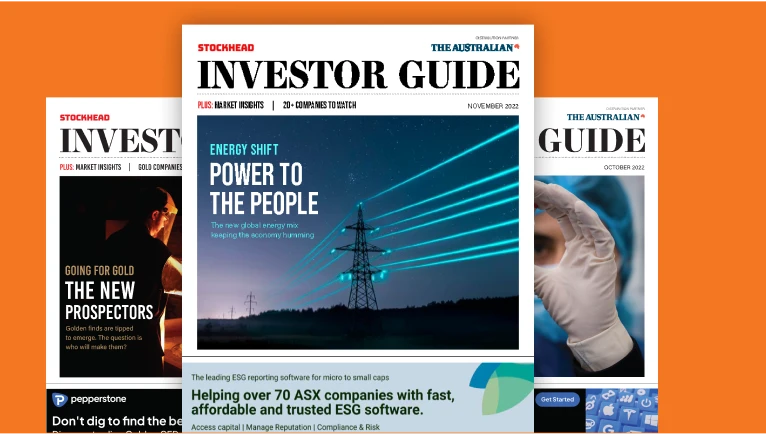A price floor could be just the thing to supercharge the rare earths sector

Rare earths floor pricing could supercharge development of new supplies. Pic: Getty Images
- Australia considering similar price floor as the $110/kg pricing US has set with MP Materials
- Measure is aimed at reducing reliance on Chinese sources of rare earth elements
- Industry says guaranteed higher prices are essential for development of new supplies
With much of the world keen to reduce its reliance on Chinese-dominated sources of critical minerals such as rare earths, it is unsurprising that major economies such as the US would take steps to ensure security of supply.
This was highlighted by the US Department of Defense reaching a partnership with MP Materials – the only rare earths producer in the US – that includes a rare earths price floor of US$110/kg.
Australia has also flagged its interest in doing something similar with Resources Minister Madeleine King saying earlier this month that mechanisms to set a floor price were under “active consideration” as part of the critical minerals strategic reserve.
Speaking to The Australian, she said the government’s plans will focus on critical minerals with “demonstrated end-uses in defence and strategic technologies”.
“Pricing certainty means companies and investors are less exposed to volatile markets and prices, which are opaque and prone to manipulation,” she added.
The Federal Government is already backing Iluka Resources’ (ASX:ILU) Eneabba REE refinery and is looking to establish a critical minerals strategic reserve that will see it agreed volumes of critical minerals from commercial projects, or establish an option to purchase at a given price.
Impact of rare earths price floor
How would the introduction of a REE price floor impact on the industry?
Iluka managing director Tom O’Leary believes the MP Materials deal is a significant development that demonstrates that extensive measures are required to establish a successful REE industry that spans from mine to magnet.
Speaking at the company’s half-yearly results investor briefing, he said the US government’s deal was “really an explicit recognition that higher prices are essential to establishing a successful rare earths industry”.
“For some years now, we’ve debated on these calls the possibility of the emergence of a pricing paradigm for rare earths that’s separate from the Asian Metal Index, and that’s a narrative we’ve been pursuing generally and with customers over the last several years,” he added.
“The US government has now set that floor price of US$110 per kilo for MP’s product, and while we’re yet to see how that’s going to reverberate through the market downstream to customers, it’s evidence that we’ve moved to, at the very least, a bifurcated market.
“That product will now be rewarded with a price totally disconnected from the Asian Metal Index. That much is clear.”
He adds the US government floor price is close to Adamas’ long-term view of US$108/kg over the next 10 years, which forms the basis for its project economics that were published in December 2024.
“The MP deal, just to close, is really a clear step in the right direction, but there’s still work to do. We’re not getting ahead of ourselves. It’s also worth noting, I think, the Australian government’s approach is also very encouraging,” O’Leary concluded.
This opinion is shared by Red Metal managing director Rob Rutherford who told Stockhead in mid-July 2025 that Australia should work with traditional economic allies such as Japan and South Korea to set up subsidised intergovernmental supply chains.
“It is now up to other manufacturing nations like South Korea, Japan, Europe and even Australia to invest in expanded magnet capacity with REO supply guaranteed with similar price flooring mechanisms,” he said.
Guaranteed – and higher – prices will provide rare earths explorers with the certainty required to commit to developments of new resources.
ASX rare earths plays
With a mining licence in hand, VHM is jogging ahead of many peer companies towards a final investment decision before the end of 2025 for its shovel-ready Goschen project in Victoria, which will in turn allow for the production of rare earths and mineral sands to start in late 2026.
The project has an ore reserve of 210 million tonnes within a massive resource of 892Mt at 3% total heavy minerals and is also rich in rare earths.
This is more than enough to fuel an initial 1.5Mtpa operation using a modular plant that has estimated pre-production capital costs of $160m.
Stage 1 will produce 4300 tonnes per annum of rare earth mineral concentrate and 69,000tpa of zircon/titania heavy mineral concentrate at operating costs of $86 million per year.
This is in turn expected to fund the stage two expansion to 5Mtpa, which will cost an additional $110-120m and take production up to 9000tpa of rare earths and 134,000tpa of HMC for at least 19 years.
The very uncommon granite-hosted Sybella project that Red Metal holds in northwest Queensland is best known for its rich endowment of the valuable magnet rare earths neodymium and praseodymium.
During the June 2025 quarter, metallurgical testwork returned positive bottle roll pH optimisation on the discovery’s Kary zone and optimum economic rare earth oxide leach extractions were achieved at a pH range which highlighted key leach parameters for pending tests.
This work also resulted in the successful removal of iron impurity within the heap.
Sybella has a resource of 4.795Bt grading 302ppm NdPr and 28ppm dysprosium and terbium. This includes a weathered graphite resource of 788Mt at 297ppm NdPr and 28ppm DyTb.
Ark holds the advanced Sandy Mitchell placer REE project in north Queensland that has a high confidence measured resource of 71.8Mt at 1,732.7ppm monazite – a mineral containing REEs – equivalent.
It also has the potential to continue growing to a scale rivalling Sybella given its exploration target of 1.3 billion to 1.5 billion tonnes at 1,286 to 1,903 ppm MzEq.
Under a scoping study released in December 2024, a development underpinned by the measured resource could cost between $120-150 million and generate annual post-tax-free cash flow totalling $25m-30m.
Mining at Sandy Mitchell is expected to be relatively straightforward as mineralisation is near-surface with minimal topsoil and no overburden while processing is also likely to be simple with in situ processing using gravity only and no chemicals, salts or acids required.
A recent upgrade to resources at Victory Metals’ flagship North Stanmore project has revealed ultra-high, heavy rare earth ratio zones of up to 83% that demonstrate its potential as a low-cost REE producer.
The project now has a resource of 320.6Mt grading 510ppm total rare earth oxides with HREO’s making up 39% of the total basket.
This work also identified a high-grade shallow zone of 50 million tonnes at 1,050ppm TREO/Sc2O3.
Mineralisation remains open, offering the potential to target the ultra-high heavy rare earth ratio zones through satellite pits.
The upgraded resource will underpin the 2025 pre-feasibility study planned for release later in 2025.
Australian Mines holds the Jequie rare earths-niobium project where recent auger drilling has revealed REE mineralisation across near-surface areas, indicating the potential for ionic-clay hosted deposits.
About 69% of the samples returned from the Jequie South target returned assays greater than 400ppm while drilling at Jequie North intersected anomalous intervals of REE mineralisation over a wide area with 55% of the assays returning TREO values of more than 400ppm.
AUZ plans to complete additional exploration programs at Jequie, which may comprise geological mapping, geochemical sampling and auger drilling.
Jequie sits within Brazil’s mining-friendly Bahia state and is adjacent to Brazilian Rare Earth’s (ASX:BRE) 510Mt Rocha de Rocha REE project.
The company is also completing a review of its Flemington scandium-nickel-cobalt project in NSW and is in offtake discussions relating to its Sconi nickel, cobalt and scandium project in Queensland.
Other critical minerals
Australia’s plans for a critical minerals stockpile could also benefit companies with other valuable elements outside of rare earths.
Everest Metals Corporation (ASX:EMC) has one of the world’s highest grade rubidium resources at its Mt Edon project in Western Australia.
It currently has a resource of 3.6Mt at 0.22% Rb2O including a higher grade core of 1.3Mt at 0.33% RB2O.
Rubidium is recognised as a critical mineral in the US and Japan thanks to its use in military, new energy and high-tech applications in propulsion, night vision equipment, radiation detection, infrared signals, thin batteries, vapour turbines and in ion engines that could power spacecraft.
Despite its name, Heavy Rare Earths (ASX:HRE) is focused on uranium following a change in focus last year.
However, its brownfields Radium Hill project has the benefit of having scandium and rare earths that were ignored during uranium mining operations in the 1950s.
Recent reconnaissance sampling by HRE at the site returned high-grade values for scandium and rare earths in March up to 16,273ppm U308, 1,081ppm Sc203 and 36,371ppm TREO, potentially expanding the search profile for the project.
It also retains ownership of the Cowalinya REE project in WA that has an inferred resource of 159Mt at 870ppm TREO.
At Stockhead, we tell it like it is. While VHM, Red Metal, Ark Mines, Victory Metals, Australian Mines, Everest Metals Corp and Heavy Rare Earths are Stockhead advertisers, they did not sponsor this article.
Related Topics

UNLOCK INSIGHTS
Discover the untold stories of emerging ASX stocks.
Daily news and expert analysis, it's free to subscribe.
By proceeding, you confirm you understand that we handle personal information in accordance with our Privacy Policy.








